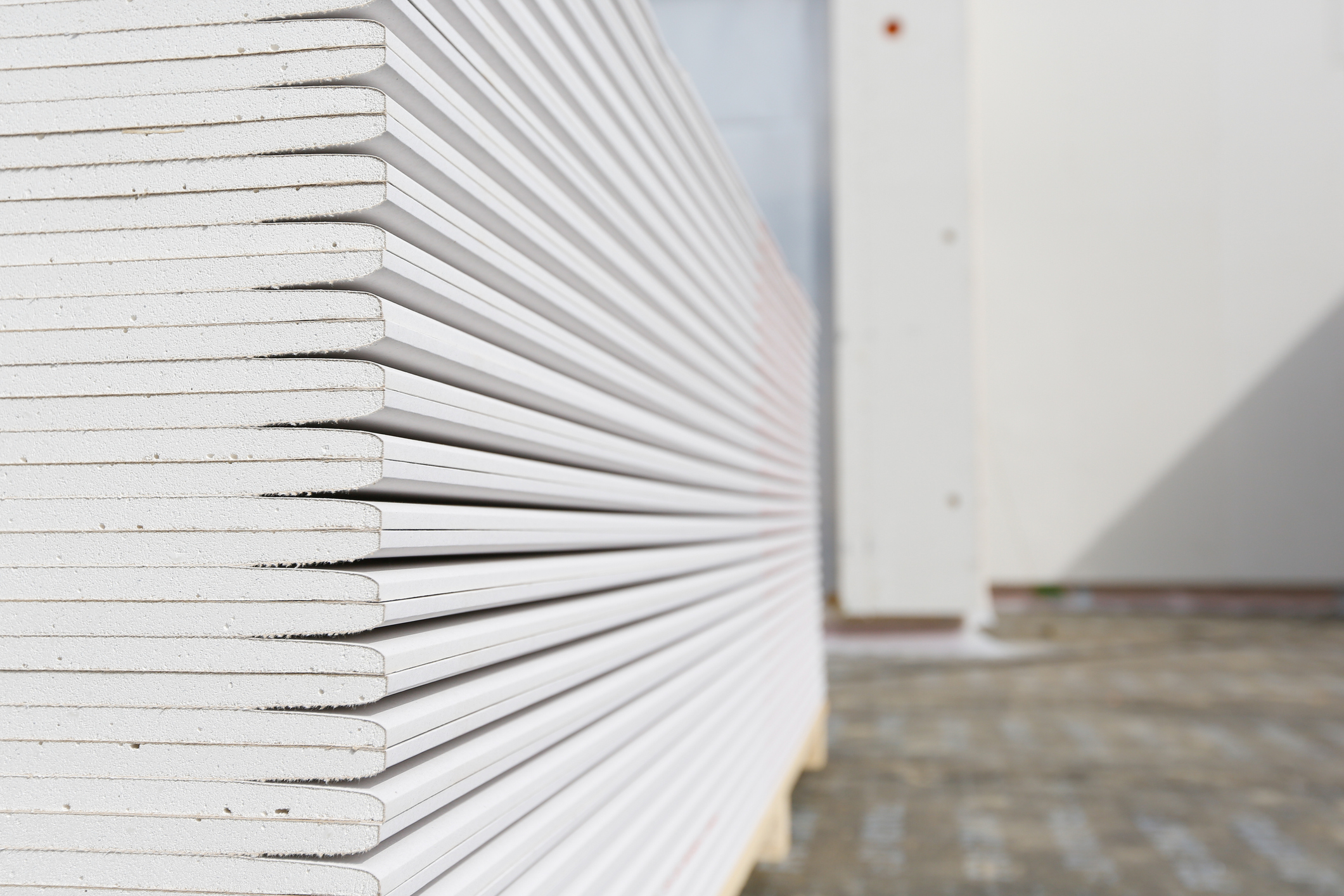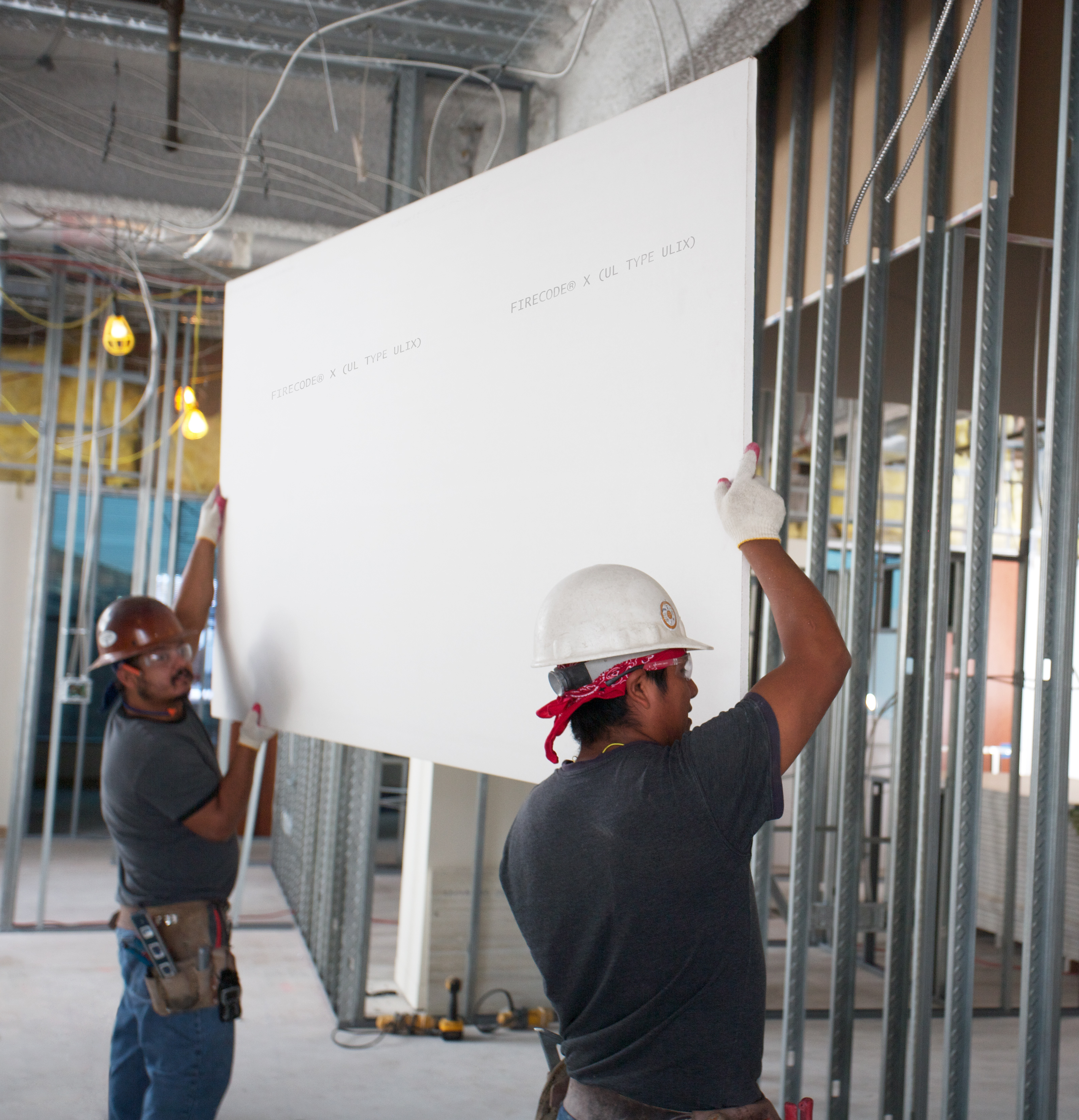Sign In
You're All Set
Welcome back! You are now signed in.
You have been logged out
You have been logged out due to inactivity
Forgot Password
Please enter the email address you used to create the account. We'll send you a link that lets you create a new password.
You're All Set
Please check your email. Click the link in the email to create a new password.
Reset Password
You're All Set
Success! Your password has been updated.
Change Password
You're All Set
Success! Your password has been updated.
Type X vs Type C: What’s the Difference?
Updated 8/21/24
Installing Type X drywall panels in place of Type C panels, and vice-versa, is a common jobsite error that can be a costly mistake no matter how you look at it. At best, it can lead to tedious re-work to correct the issue, uninstalling and installing panels in their correct positions. At worst, if the issue goes ignored or unnoticed, it can expose the entire building to fire hazards, endangering the lives of occupants.
One of the primary reasons these panels are installed incorrectly is that there’s little visual differentiation between them. Even product name differences are subtle and easily overlooked, which makes it a challenge to identify a panel after it’s been fully installed. But it wasn’t until recently that USG developed Sheetrock® Brand EcoSmart Panels Firecode® X (UL Type ULIX™) to offer a single-panel solution to the oft-asked question of “what’s the difference between Type X and Type C panels?”
But before we can understand the difference between the panel types and how EcoSmart panels revolutionized fire-resistant construction, we must first understand the role that gypsum panels play in fire safety and fire-resistant structures.
Developing Fire-Resistant Panels

The driving factor behind the widespread use and popularity of what we know as drywall today was thanks in large part to the fire-resistive qualities of the mineral gypsum. This is what makes drywall panels one of the most effective building materials through what is known as “passive protection” against fire in the built environment; to restrict the transfer of heat and fire in the event of an emergency.
Depending on the formulation of the core, different gypsum panels will provide different levels of performance in varying applications. Understanding the different panels and their performances is imperative to proper design, installation, and system performance in life-safety-critical applications.
With a growing American population and residential construction on the rise in the 1950s, increasing the fire resistance of gypsum panels became the primary focus of construction manufacturers. During this time, considerable developmental efforts went into maximizing the inherent fire-resistive properties of gypsum panels.
The Creation of Type X Panels
The result of this push to build with fire resistance in mind was a 5/8-inch, "Firecode® Core" gypsum panel known as Type X. These panels increased the fire rating of a standard assembly to a minimum of one hour, similar to metal lath and plaster which was considered the only acceptable one-hour fire-resistive construction at the time.
Most commonly, the gypsum in Type X panels are intermixed with special glass fibers to reinforce the core of the panels. As water is driven off from the gypsum of the panels during exposure to heat, these fibers reduce the size of the cracks that form and reinforce the core, extending the length of time the panels maintain their structural integrity.
The Creation of Type C Panels
Throughout the 1960s, USG continued a legacy of innovation in the drywall category by inventing an enhanced proprietary Type X panel, commonly referred to as USG “Type C.” The core of these enhanced Type X panels also contained glass fibers, only in a much higher percentage by weight, as well as other proprietary shrinkage-compensating additives that expand when exposed to direct heat. This allowed the core of the enhanced Type X panels to remain dimensionally stable during a fire, allowing the panels to remain in place for a longer period of time, even after the combined water has been driven off.
This added strength and stability would prove to be crucial in fire-rated building construction, and today, almost all UL fire-rated floor- and roof-ceiling assemblies specify Type C to ensure the proper level of fire performance. It is for this reason that Type C became synonymous with ceiling applications, while Type X became the standard for walls—but there’s still more to the story.
The Real Difference Between Type X and Type C Panels
Despite the differing compositions of these panels, there is another true differentiator between Type X and “Type C” panels: “Type C” panels are not an industry-defined category of gypsum panels.
ASTM C1396, Standard Specification for Gypsum Board, categorizes gypsum panels in two groups: Regular and Special Fire-Resistant Type X. As previously mentioned, “Type C” is the more recognizable name for an enhanced proprietary Type X panel. It is also important to note that “Type C” is not defined by ASTM, but is a term used by Underwriters Laboratories, Inc. (UL) to identify a particular manufacturer’s product.
This means that since there is no formal industry definition for special fire-resistant panel beyond “Type X,” there are no qualifications for the differences in performance between Type X and enhanced proprietary Type X panels, also known as “Type C.” In this way, there is no standard “Type C” panel, and their composition can vary from manufacturer to manufacturer. While enhanced proprietary Type X panels (including Type C) have been evaluated and are approved in more challenging constructions due to their superior fire-resistive qualities, these panels are still, by definition, a Type X, having met the ASTM C1396 minimum requirements as fire-resistant.
So, while it is a common industry assumption that Type C panels are required in ceilings and Type X panels for walls, the use in any given application is not limited by panel type, so long as the panel has been evaluated and approved for such use.
One Panel to Rule Them All
After USG introduced enhanced Type X panels in the 1960s, the industry remained stagnant without many innovations in fire-resistant panels that moved the needle for installers on the jobsite who were beginning to confuse Type X with this new “Type C” panel. USG was not satisfied with the status quo of two types of panels when one is capable of doing the job of both; further innovation was necessary to eliminate the chance of misapplication and reduce jobsite complexity with multiple SKUs.
Introduced in 2017, USG Sheetrock® Brand EcoSmart Panels Firecode® X (UL Type ULIX™) are ultralightweight 5/8-inch enhanced proprietary Type X gypsum panels that have been formulated at a significantly reduced weight and lower environmental impact. Like USG Type X and Type C panels, the Type ULIX™ panels comply with ASTM C1396 for 5/8-inch thick and Type X gypsum panels.
Following comprehensive evaluations at the USG Corporate Innovation Center, UL approves USG Sheetrock® Brand EcoSmart Panels Firecode® X for fire performance in the most widely specified wall, column, horizontal membrane, and floor- and roof-ceiling assemblies as an alternative to both Type X and Type C panels, significantly reducing jobsite stocking and hanging complexity while promoting greater worker safety and productivity.
This effectively eliminates the need for separate Type X and Type C panels on the jobsite, reducing the chance of misapplication. These panels are also the industry’s lightest, weighing up to 28% less than standard Type C and up to 22% less than standard Type X, significantly reducing installation time while defying conventional thinking that mass is required to meet fire performance.
The USG Solution
Building design presents countless challenges, and USG has been designing and testing fire-rated assemblies for use in commercial and residential construction for over a century and counting. USG established most of the fire testing procedures currently used by UL, solidifying USG’s position as a leader in fire safety amongst building material manufacturers.
When specifying or installing USG solutions, you can have confidence and trust that its products have been engineered to be the most durable and highest performing on the market.
Learn more about the benefits of EcoSmart panels here.






